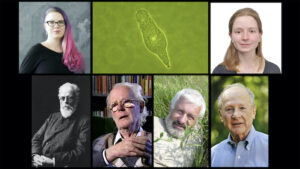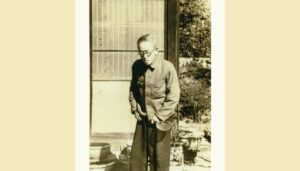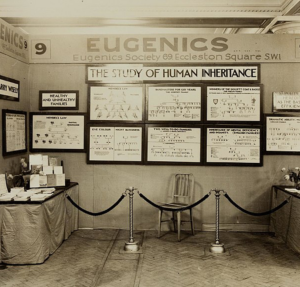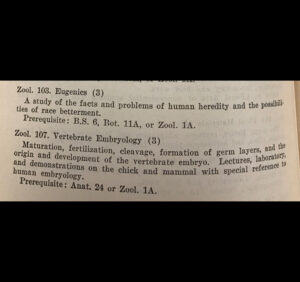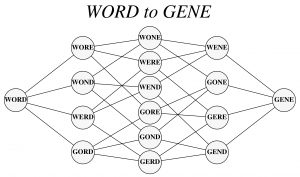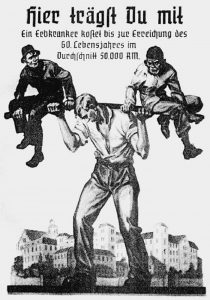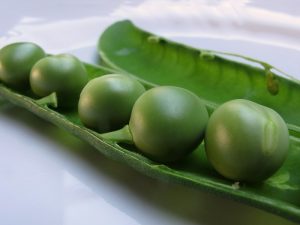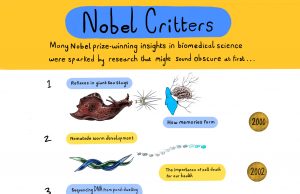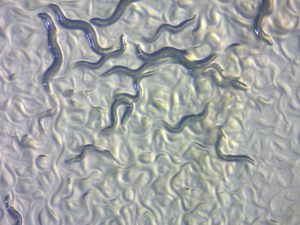Enter your address to receive notifications about new posts to your email.
Articles tagged History of Genetics
(25 results)
-
An evolutionary scandal ends
Guest post by Charles H. Langley. Dic, hospes, doctis caelebs animalculum obisse hicque iacere physis legibus conveniens. (Stranger, tell the learned that the celibate little animal has passed away, and lies here, conforming to the laws of nature.) —John Rundin, with apologies to Simonides and Cicero Thirty-five years ago, in a celebrated News & Views…
-
100 years since the medaka’s international debut: Aida’s legacy
From a Kyoto garden to scientific discoveries. Since the 17th century, medaka fish have been bred for their beautiful colors. Shortly after the 1900 re-discovery of Mendel’s laws of inheritance, medaka began to be used for genetic studies. Recessive inheritance of the orange-red (b) and white (r) variants, female-limited appearance of the white phenotype, and an…
-
News
Want to teach eugenics history in your genetics class? Advice and resources to take the leap!
Guest post by Michele Markstein and Gregory Davis. A summary of the May 26, 2020 TAGC 2020 Online workshop, “Raising a Woke Generation of Geneticists: How and Why to Include Eugenics History in Genetics Classes.” In the wake of George Floyd’s murder by Minnesota police officers, the nation has been wrestling with how to identify and combat…
-
Community Voices
Understanding our eugenic past to take steps towards scientific accountability
Guest author Rori Rohlfs describes a unique classroom project for exploring the eugenic history of our field. I was a fourth-year graduate student when I found myself asking a librarian for the archives of the journal The Annals of Eugenics. I got to that point by climbing back through a chain of references on fundamental…
-
One life, many ideas: A centennial homage to John Maynard Smith
Guest post by C. Brandon Ogbunugafor, Assistant Professor at Brown University. John Maynard Smith, born in London on January 6, 1920, was one of the great iconoclasts of the post neo-Darwinian synthesis era, a cult figure whose life was defined by notable contributions across a wide breadth of subfields [1]. He not only authored numerous…
-
From hidden contributor to professor: an interview with Margaret Wu
An interview with one of the “acknowledged programmers” whose contributions to early computational population genetics have been examined by an analysis of article acknowledgment sections. Guest post by Emilia Huerta Sanchez and Rori Rohlfs. Margaret Wu, Professor Emeritus at the University of Melbourne, is a leader in the field of education statistics, having published 80…
-
Loaded words
Guest author Amir Teicher discusses how the concept of “genetic load” traces its roots back to eugenic thinking, as described in his recent Perspectives article in GENETICS. The possibilities opened up by advances in genome sequencing have recently spurred discussions on the burden, or cost, that mutations pose to organisms and populations. Does the relaxation…
-
What inspired Mendel?
Newly uncovered newspaper articles shed light on Mendel’s motivations. Gregor Mendel is considered by many to be the father of genetics. Yet, because his work was not fully appreciated in its time, little is known about Mendel himself. Primary sources, such as letters he wrote, are rare; only a few dozen pieces of his correspondence…
-
Why do so many Nobel Prizes go to scientists working on fruit flies?
As night fell, astronomer Jean Jacques d’Ortous de Mairan watched a plant’s leaves, symmetrically arranged side-by-side on a stem, clamp shut. It was 1729, and he was studying the dramatic nocturnal movement of Mimosa pudica. Strangely, he found that the plant behaved the same way even when it wasn’t exposed to natural cycles of light…
-
50 years of molecular evolution in Drosophila
In the genomic era, population geneticists are flooded with molecular data on the evolution of natural populations. This deluge started in 1966 as a trickle of data from protein electrophoresis studies, including the landmark GENETICS papers published by Richard Lewontin and John Hubby. As Lewontin is honored this week at the Annual Drosophila Research Conference…
-
The tiny worm with a big impact
These worms are as long as a pencil’s tip and only just visible without a microscope. They are among the smallest multicellular animals, but they still have complex organ systems. They are Caenorhabditis elegans, one of the most important organisms in modern biology and a key to understanding the most basic molecular processes of life.…

